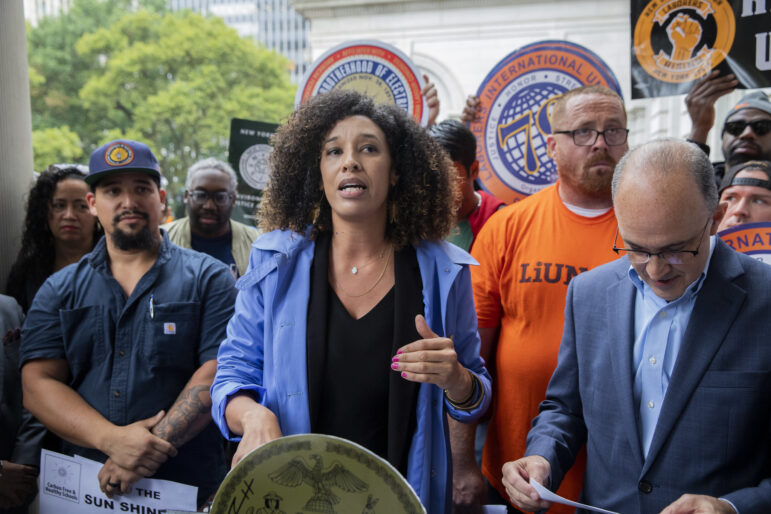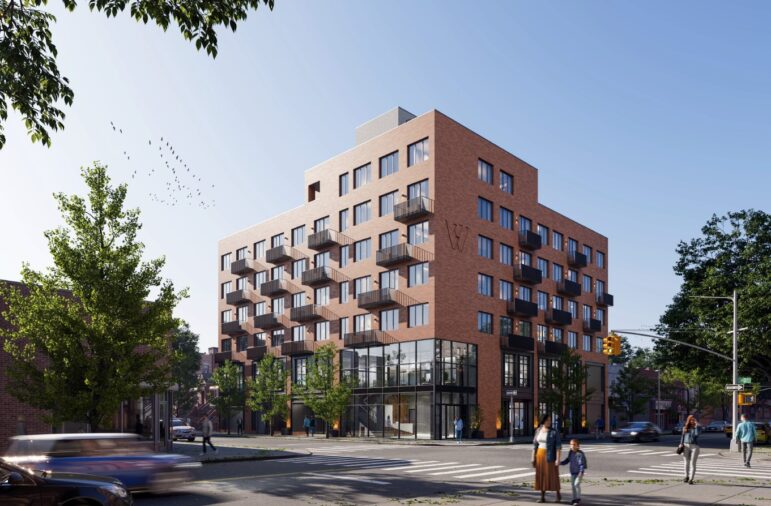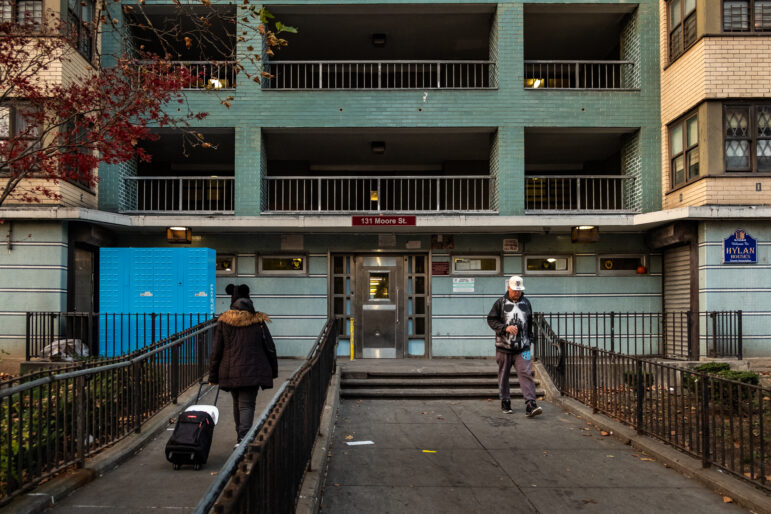
Photo by: City Hall, Governor’s Office, Ed Reed/Mayor’s Office
After Mayor Bloomberg’s called for juvenile justice detainees to be moved closer to their families, Gov. Cuomo launched the Close to Home program. Now advocates look to Mayor de Blasio to address shortfalls in local implementation.
Every day in New York City’s Family Courts, young people are sentenced to placement—a delicate euphemism for incarceration. Historically, this meant certain exile to remote upstate facilities, isolating city youth, limiting family access and—as a 2009 U.S. Department of Justice investigation proved—placing volatile, vulnerable, high-need youth at risk of physical, emotional and sexual abuse.
Bringing city youth downstate was a goal of former Mayor Michael Bloomberg, who three years ago challenged Gov. Andrew Cuomo to create programs that would bring city youth back down to New York City—and funnel moneys for their care out of state coffers and into city agencies.
“The current system isn’t helping kids, it isn’t helping taxpayers and it isn’t helping safety,” Bloomberg said in December 2010, at a time when the city’s overall dropping crime stats mirrored trends for young “offenders” in placement, who numbered 1,300 in 2002 and fewer than 500 a decade later.
In response, Cuomo in 2012 funded Close to Home (C2H), an ambitious collaboration of the state’s Office of Children’s and Family Services (OCFS) and New York City’s Departments of Probation and Education and Administration for Children’s Services.
C2H would move hundreds of young “delinquents and offenders” from upstate to the five boroughs—back into their home communities—to help kids, better use taxpayers’ money and preserve public safety, as the mayor outlined.
Above and beyond geography or economics, C2H represented a profound change in approach: Instead of sending youth out of reach (out of sight and out of mind), the city would house troubled young people in residential facilities—at home with family members or in group-home style settings—and keep them connected to community supports and services, including therapy and school, rather than isolated and apart.
Interviews with advocates and records from agencies indicate the reforms have not delivered real change to detained children and their families. For hundreds of kids in the system, the place has changed, but the paradigm hasn’t.
An ambitious agenda
Close to Home promised robust, community-based rehabilitative programs, rigorous aftercare (once a child was released or probation completed) and family-oriented approaches rooted in the community, rather than state bureaucracy.
A paramount goal was moving youth from jail-like institutional settings to residential, home-like facilities for fewer than a dozen youth—with strong adult oversight and guidance.
In a second vital goal, planners promised, “all academic credits earned in placement [will] count towards a high school diploma”—in contrast to the frequent frustration of students whose studies upstate did not accrue to actual credit when they returned home.
The proposed changes would, officials promised and advocates believed, lead to better outcomes for youth. It would be hard to imagine outcomes that could be worse than the 81 percent recidivism rate linked with OCFS youth facilities—which came at a tab of roughly $266,000 per youth per year.
Crucially, moving youth out of institutions and back home, whenever possible, meant more than keeping kids connected to important relationships with family, school, and church, for example. It also meant enormous savings. Most estimates budget about $20,000 to $30,000 a year per child for programs in the community—roughly 10 percent of the cost of incarceration. Various projections, by ACS, the city and OCFS, showed the state saving tens of millions a year, with close to $50 million in savings projected for fiscal 2013-14.
Closer, but far from goals
None of the major C2H goals have yet been attained in full.
The first goal—to move youth out of institutions and into robust, cost-effective community programs—has not been met.
“We don’t want a bed-for-bed placement,” then-Probation Commissioner Vincent Schiraldi told The New York Times in May 2013, six months after the first C2H placements. But all too often, that’s exactly what’s happens: Youth confined upstate are confined downstate as well. Over 500 youth have been transferred from “nonsecure” OCFS facilities upstate to 31 ACS/C2H “nonsecure” facilities in New York City, in what one advocate bitterly characterizes as a “bed swap,” because youth are still placed in facilities, rather than returning to their families with supportive services. (Schiraldi on Tuesday was named senior adviser to the mayor’s office of criminal justice.)
Nonsecure facilities are group residences with few hard-core security measures, although access and egress is controlled by adult staff and cameras and other surveillance monitor the facilities. City youth in “limited-secure” facilities, which feature locked doors and fences, and “secure” (i.e., jail-like) facilities remain upstate. According to year-end statistics for 2012—the most recent available—118 New York kids were in the state’s secure centers and 94 in its limited-secure facilities. ACS plans to open limited-secure facilities in 2014 to house city youth, but children in secure placements will not be relocated to New York City under C2H’s present plan.
Advocates say that misses a key goal of C2H. “The essential promise and spirit of Close to Home is about more than shifting jurisdictions,” Gabrielle Prisco of the Correctional Association says. “The real essence was shifting to community-based services, as much as possible,” over formal placement.
It’s true that residential facilities in New York City are more home-like than the giant, mega-facilities upstate, but moving young people away from institutions and into true community-based care has not happened. Instead of being assigned to OCFS residential facilities, city youth are sent to live in ACS facilities—a different ZIP code, but the same placement model they would have had upstate.
Accordingly, none of the C2H savings that were projected to accrue have been achieved—although the money is flowing to the city, as envisioned. ACS says that startup costs and other expenses have eroded anticipated savings. “At this time, ACS has not identified cost savings related to Close to Home as startup costs have proven to be significant,” ACS spokesperson Christopher McKniff says.
Explaining the shortcomings
Opinions differ on what the obstacles have been, and on the degree to which they have sidetracked C2H.
“Close to Home is a watershed change,” Schiraldi adds. Even though “we passed it imperfectly,” it’s an improvement—a once-terrible system has been replaced by a better system that still has problems. The notion of creating residential placements that allow youth to be part of their home community while getting vital services and supports, has been undermined on multiple fronts.
One of those problems is the way money moves through the system: If a youth in placement is “worth” a quarter-million-plus a year in funding, and a youth in community programs “only” $25,000, “there’s no incentive” for the city to move youth out of institutions, Schiraldi says.
Some assert that the problems run deeper— that the planning and infrastructure were never set up to move youth from facilities into homes, calling C2H more rhetoric than substance—a kind of bait-and-switch that brings funds downstate on the backs of incarcerated youth.
According to ACS data, under 60 percent of youth were placed “in or adjacent to” their home borough. On the flip side, over 40 percent were not. Youth from the Bronx can be placed in Westchester; kids from Staten Island, in Brooklyn. (In fact, both C2H limited-secure facilities in Staten Island have been closed – so all Staten Island youth are placed out of their home borough.)
Notably, ACS administers C2H but does not directly manage the actual homes where children live. Instead, ACS contracts housing out to large, established nonprofits with experience in both foster care and juvenile justice, and those nonprofits in turn manage facilities—a model that effectively removes ACS from day-to-day responsibility for the care of children, and puts the burden on the nonprofits, who then contract out the actual work to individual service providers and staff.
Going AWOL
C2H has even had big problems keeping kids in place at the facilities where they’ve been assigned. First, lots of youth simply leave, or go AWOL. In non-secure facilities, doors are monitored but not always locked. Youth go and don’t return, or don’t return when they are expected. Last fall, 24 percent of youth—one in four—went AWOL for a day or more; by late spring, that dropped to 15 percent, or one in six.
Overall, ACS acknowledges that 236 youth have been reported AWOL for longer than 24 hours on 662 separate occasions. According to State Sen. Daniel Squadron, the city has exactly five detectives “in the entire City of New York” assigned to bringing C2H kids back to city facilities. “This detective must search for an average of 15 to 20 juveniles at a time,” according to Squadron—evidence of “woefully insufficient” resource allocations within C2H.
Schiraldi dismisses the AWOL rates—“Non-secure facilities are not locked [24/7]. Any kid is tempted to run away and go home to their mother, and that’s what they all do.”
Others disagree. In September, Queens Family Court Judge John Hunt castigated ACS and C2H for failing city youth and putting communities at risk. Hunt wrote in a decision, with one in four youth out of facilities at any given time, “the disconnect between the city and state’s good intentions and the outcomes on the ground could not have been plainer.”
Youth fall through the cracks, advocates say, even as some make a dash for the door. Two residential facilities have been closed for poor performance, including high counts of AWOL youth. In a few cases, youth who AWOL’d committed serious crimes—including homicides—and have been remanded to higher levels of secure care than residential facilities can provide.
Perverse choices skew system
But even when kids do stay put, C2H programs may not provide adequate services to meet their needs. And that may explain, in part, why courts are not assigning kids home with community support but to residential facilities, in contrast to the heart of the C2H initiative.
As always, the decision to place a child in a facility rests with the Family Court judge that hears the child’s case; the judge can place a child on probation or return a child home with mandated programs and counseling, for the child and the family.
But some children have uniquely difficult needs—or with constellations of issues that are difficult to address in any setting. Judges must weigh those needs along with the actions that have brought the child into the juvenile justice system and determine where the child will be best served—in a group home without specialized programs but near his family, for example, or in a facility with resources targeted to address the child’s issue, some distance from the home community.
Some feel that high-need kids are too-often placed in facilities by default. Kids with significant social-service needs but low risk of committing crimes don’t belong there, Schiraldi says. “Non-secure homes should not be magnets for placement because they have resources.”
But others say that as important as it is to return kids to their homes or at least their neighborhoods, the need for services is real. “These kids can fall into the cracks,” Salish says. “Kids who are not in high [legal] risk categories but have high social service needs, or multiple needs that can’t be met in [community] programs—they might be placed, not because of risk level but to get services,” mixing youth with profound social and emotional challenges in with youth who’ve been in trouble with the law.
Indeed, there are paltry resources within the C2H system for kids with serious issues. According to ACS, C2H has 12 beds for boys with intellectual and developmental disabilities; the census of boys in placement who have identified special needs exceeds 45 percent. There are 18 beds for boys with serious emotional disturbances (expressed in actions like fire-setting), and only nine beds for boys who either abuse substances or are addicted. There are 15 beds for boys who exhibit what’s described as “problematic” sexual behavior.
These are citywide numbers; for boys identified with these needs, the return to the home borough is a far second to placement at an appropriate facility. The facilities for girls are even less robust: Girls with “serious emotional disturbance/substance abuse and addiction” are allotted 15 beds; girls who have been commercially sexually exploited, six.
With less than 80 beds citywide for challenged, troubled youth, C2H cannot place youth “in or near” their home community—and it cannot meet the greater need for programs and support that many C2H youth and families clearly deserve.
Legal hoops also complicate the way courts assign youths: Youth on probation are often prohibited from contact with other court-involved youth—so participating in community-based C2H mentoring programs or support groups with other teens while on probation is de facto off-limits. If a youth is held in residential placement instead of placed on probation, there are fewer restrictions on peer interactions—and greater access to programs and support.
Credits still disappearing
The second goal, the promised transfer of all academic credits earned by youth in placement, has not been delivered, either. Attorneys at Advocates for Children say when teens are released from OCFS placement, New York City public high schools frequently reject their credits—and don’t want to re-enroll them, in violation of the law.
In an annual report on C2H, ACS reported that over 300 C2H youth attended DOE schools (most often, Passages Academy schools, sited in or near residential facilities, which enroll youth in residential placement or diverted from placement, during probation ).
About 10 percent earned 10 or more credits (nearly an academic year); 10 percent earned half a credit. Thirty-one eighth graders were promoted to high school.
But youth moving from state facilities to C2H might not carry all of their credits home. ACS’ annual report acknowledges: “Although youth received academic credits through local school districts while in OCFS sites, considerable difficulties were encountered when attempting to transfer those credits to local NYC schools.”
The loophole? In seeming contradiction to C2H’s commitment to fully transferable student credits, city public schools are not bound to accept credits earned by young people in institutions or residential facilities. Principals, whose autonomy gained authority under Bloomberg, are permitted to review student records, and to decide whether (and which) credits to accept. This means that a student’s credit transfer—and his actual enrollment—depends on the judgment of a single individual, a school principal, with no oversight.
Those lost credits represent hundreds of hours of hard work in difficult circumstances, by students often deeply discouraged with school.
“It’s a huge deterrent,” says Dawn Yuster, director of Advocates for Children’s School Justice Project. “It’s tragic. They do all this work, spend all this time, but the credits may not count.” She adds: “A lot of times, community schools don’t want our kids. But they’ve served their time, they have a right to an education. At the end of the day, no school is supposed to turn away a kid.”
Additionally, students with special needs face extra hurdles, advocates say. Almost half of youth in placement have special needs. Yet some who can be served by mainstream, general-education schools are directed to the DOE’s special-education schools, where only about a quarter of students complete high school and graduate. Others are given a choice: Stay is the special-education school, or go to a regular high-school but give up the Individualized Education Program (IEP) that is designed to help challenged students succeed
DOE representatives declined City Limits’ request for comment.
A paucity of data has made understanding the educational landscape more difficult.
“It’s hard to know what’s fully working and what’s not working,” says Yuster. “We’d like to get more information on how education is actually being delivered.”
Advocates want to know schoolroom specifics: Do students receive actual instruction or focus on rapid credit recovery? Do they work with teachers or technology, or a blend? They also raise concerns about youth with emotional and learning disabilities, and ask whether these high-risk students are receiving the learning supports and specialized instruction mandated by law. Without individual student data, there’s no way to know.
In its annual report, ACS blames “limitations and complications” that make tracking student achievement difficult. The agency acknowledges issues of data-sharing that await resolution and is working on a Memorandum of Understanding with the DOE to permit data-sharing—but it is not clear whether the agencies’ data-sharing will extend to advocates and the public, or when the MOU will be approved.
Full steam ahead—slowly
In its next phase, C2H will open Limited Secure facilities in New York City. These facilities will be locked and monitored, and provide services to youth within the facility, with far less community contact.
The nine limited-secure sites ACS is planning will be administered by three nonprofits and serve 12 to 20 youth each. These facilities will be larger than the non-secure settings, in order to provide space for medical and dental care; lawyer and family meetings; counseling and mental health services; living space and recreation. The ratio of staff to youth will be 3:1; all of the limited-secure facilities will be locked, with 24-hour staff to control access to, and egress from, the buildings.
The limited-secure facilities are anticipated to open by fall 2014, after long delays. (“It has proven difficult to secure sites in and around New York City that are large enough” to satisfy the need, McKniff said.) And the law that mandated the creation of C2H will sunset in 2015.
In the early months of the new administration era, there are a lot of squeaking wheels. Some advocates say that it’s hard to get the mayor’s attention, beyond the big education projects he championed as a candidate. The mayor’s office has not issued any communications specific to C2H, and declined City Limits’ request for an interview.
Even city officials don’t have (or won’t disclose) a sense of the tea leaves; When he spoke to City Limits, Schiraldi said he hadn’t talked with the mayor about C2H, but “it’s a good sign they hired Gladys [Carrion],” the former head of OCFS who was among C2H’s core architects, to lead ACS.
Coordinating information-sharing across agencies—and posting data publicly—are big potential improvements, Yuster said, that would not require a large cash investment by the city.
“We really want C2H to work,” AFC’s Yuster said, “but it’s going to take a lot of coordination and effort across city agencies, by advocates and with community voices, to make it happen.”
“We have a great opportunity before us under Mayor de Blasio,” Prisco says. “New York can be a real national leader,” Prisco adds. “Detention and incarceration fail kids and fails public safety. Investing in community-based programs has been shown to work. Bloomberg laid the foundation, but there’s a lot of work to be done. Now is the time to do it.”
Clarification: The original version of the story was altered for clarity. : A reference to OCFS was added to clarify the scope of attorneys’ comments. : A reference to OCFS was added to make it clear that it was in the move from state to city care, and not within city care, that the problems with credit acceptance occurred.
City Limits coverage of child welfare is supported by the Ira W. DeCamp Foundation.








